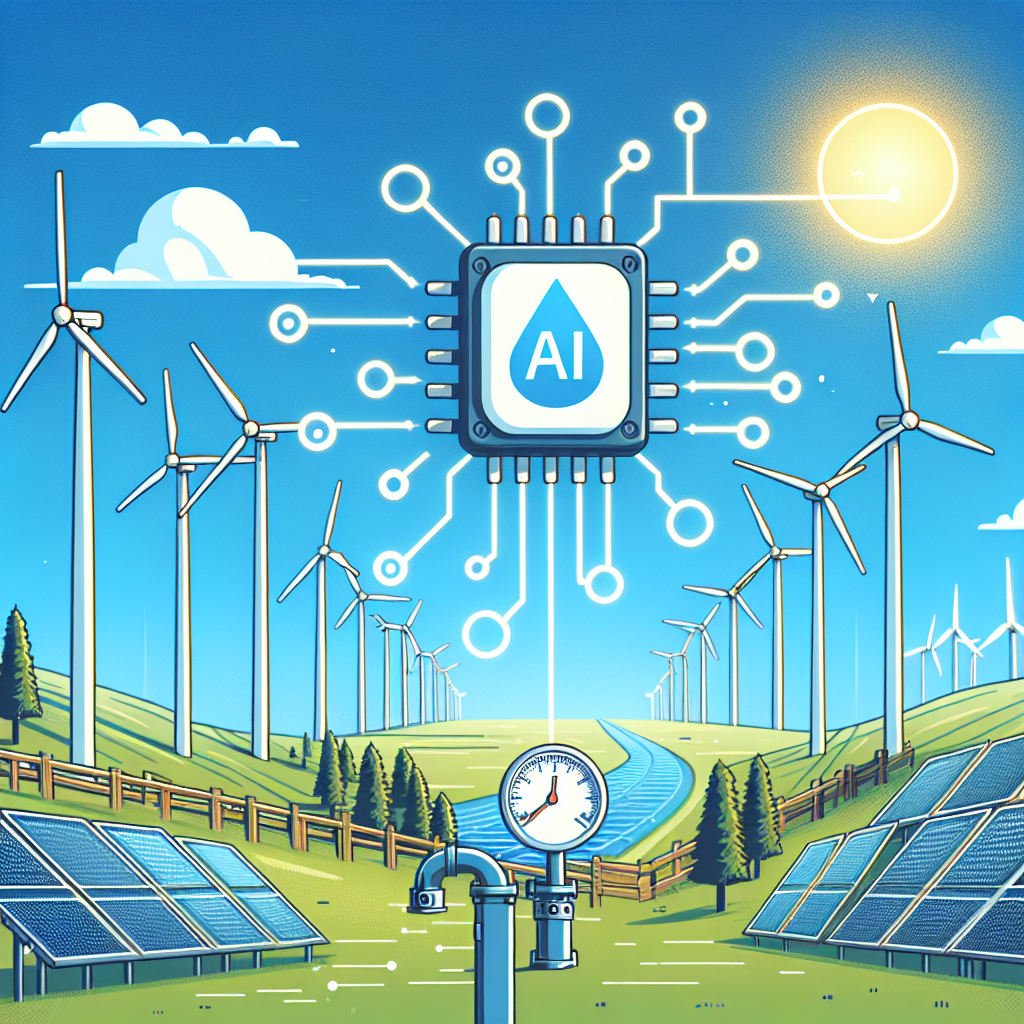Integrating AI into Renewable Energy Systems for Better Results
Introduction
Renewable energy sources such as solar, wind, and hydro power are becoming increasingly important in the fight against climate change and the transition to a more sustainable energy future. However, integrating these intermittent energy sources into the grid can be challenging due to their variability and unpredictability. This is where artificial intelligence (AI) can play a crucial role in optimizing the performance of renewable energy systems and improving their efficiency.
AI technologies such as machine learning, neural networks, and predictive analytics can help renewable energy systems to adapt to changing conditions in real-time, optimize energy production and storage, and reduce costs. By analyzing data from sensors, weather forecasts, and historical energy production, AI can make more accurate predictions about energy demand and supply, and optimize the operation of renewable energy systems to maximize their performance.
AI can also help to identify potential faults or failures in renewable energy systems before they occur, enabling proactive maintenance and reducing downtime. This can improve the reliability and longevity of renewable energy systems, and ultimately reduce their overall cost of ownership.
Case Studies
There are several examples of how AI is being used to improve the performance of renewable energy systems. For instance, in the solar industry, AI algorithms are being used to optimize the placement of solar panels, track the movement of the sun, and predict cloud cover to maximize energy production. By analyzing historical data and real-time weather forecasts, AI can adjust the tilt and orientation of solar panels to capture the maximum amount of sunlight throughout the day.
In the wind industry, AI is being used to predict wind patterns and optimize the operation of wind turbines. By analyzing data from sensors and weather forecasts, AI can adjust the pitch and yaw of wind turbines to capture the maximum amount of wind energy and reduce wear and tear on the equipment. AI can also help to predict maintenance needs and schedule repairs before a breakdown occurs, reducing downtime and increasing the lifespan of wind turbines.
In the hydro industry, AI is being used to optimize the operation of hydroelectric power plants and manage water flow for maximum energy production. By analyzing data from sensors and weather forecasts, AI can adjust the flow of water through turbines to match energy demand and minimize waste. AI can also help to predict flooding risks and manage water levels to prevent damage to infrastructure and ensure the safety of nearby communities.
Benefits of Integrating AI into Renewable Energy Systems
There are several benefits to integrating AI into renewable energy systems, including:
– Improved efficiency: AI can optimize the operation of renewable energy systems to maximize energy production and reduce waste. By analyzing data from sensors and weather forecasts, AI can adjust the parameters of renewable energy systems in real-time to match energy demand and supply, and improve overall efficiency.
– Cost savings: By predicting maintenance needs and scheduling repairs before a breakdown occurs, AI can reduce downtime and increase the lifespan of renewable energy systems. This can result in cost savings for energy providers and consumers, and make renewable energy more competitive with traditional fossil fuels.
– Increased reliability: AI can help to identify potential faults or failures in renewable energy systems before they occur, enabling proactive maintenance and reducing downtime. This can improve the reliability of renewable energy systems and ensure a continuous supply of clean energy to the grid.
– Environmental benefits: By improving the efficiency and reliability of renewable energy systems, AI can help to reduce greenhouse gas emissions and mitigate the impacts of climate change. This can contribute to a more sustainable energy future and protect the environment for future generations.
FAQs
Q: How does AI optimize the performance of renewable energy systems?
A: AI analyzes data from sensors, weather forecasts, and historical energy production to make more accurate predictions about energy demand and supply. This allows AI to adjust the parameters of renewable energy systems in real-time to maximize energy production and reduce waste.
Q: Can AI help to reduce the cost of renewable energy?
A: Yes, AI can help to predict maintenance needs and schedule repairs before a breakdown occurs, reducing downtime and increasing the lifespan of renewable energy systems. This can result in cost savings for energy providers and consumers, making renewable energy more competitive with traditional fossil fuels.
Q: What are some examples of how AI is being used in the renewable energy industry?
A: AI is being used to optimize the placement of solar panels, predict wind patterns and optimize the operation of wind turbines, and manage water flow for maximum energy production in hydroelectric power plants.
Q: How does AI contribute to a more sustainable energy future?
A: By improving the efficiency and reliability of renewable energy systems, AI can help to reduce greenhouse gas emissions and mitigate the impacts of climate change. This can contribute to a more sustainable energy future and protect the environment for future generations.
Conclusion
Integrating AI into renewable energy systems can help to optimize their performance, reduce costs, increase reliability, and mitigate the impacts of climate change. By analyzing data from sensors, weather forecasts, and historical energy production, AI can make more accurate predictions about energy demand and supply, and optimize the operation of renewable energy systems to maximize their efficiency. This can help to accelerate the transition to a more sustainable energy future and ensure a continuous supply of clean energy to the grid.

